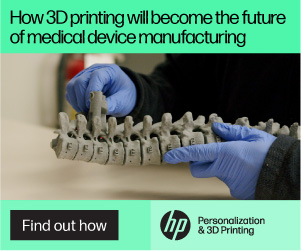Startup Lumafield emerged from stealth mode replete with funding and an innovative CT scanner that was purportedly safer and easier to use than others. Now, the firm has secured a $35 million Series B round with investors Spark Capital, Lux Capital, Kleiner Perkins, Data Collective, and Future Shape. The startup has now raised over $65 million to democratize CT scanning.
“The manufacturing world is changing dramatically. Manufacturers are confronted with an increasingly competitive marketplace, radical shifts in supply chains, and ever-higher customer expectations. My experience leading Protolabs gives me an appreciation for the positive impact technology can have on manufacturing. Lumafield offers a technology, a team, and a perspective that promise to reshape the way products are made. I’m very excited to work with Lumafield to realize its vision,” said Lumafield board member Victoria Holt, former CEO of Protolabs.
CT is an essential technology for checking 3D printed parts. By looking at the inside an additively manufactured item, we can determine if it has cracked or made correctly. This is particularly important in additive, due to the possibility of internal complexity, as well as the potential for internal stresses. However, the technology has traditionally been extremely costly and even potentially hazardous. For that reason, it is of great advantage to the additive industry to have CT scanning made more commonplace, accessible and simple by Lumafield.
The startup’s Neptune scanner is reportedly 300 times faster than it once was, suiting to analyzing many parts in series production. I’m a long-term advocate for checking each 3D printed part rather than just a sample for quality assurance (QA), so this development is music to my ears.
Under the hood of the Lumafield machine is a lot of software, which the startup is turning to democratize a hardware-dominated field. By using AI, the firm claims that it needs fewer x-rays to achieve the same results of other scanners. The AI also makes it possible to use less data to obtain high quality 3D models, saving time and money.
This concept has significant latitude for future development. For instance, consider all of the things the firm can do to speed up analysis and identify faults. Lumafield states that some scans that ¨took several hours can now run in a minute or less,” which would really make the technology much more deployable industrially. For now, the scanner automatically identifies some faults in parts, but it could potentially go further and specifically identify parts out of spec or help users dial in more precise settings automatically. With further automation, components could be rejected, recycled, and pushed through in increasingly automated ways. Lumafield can be found at IMTS in the East hall, third floor booth 135828.
Subscribe to Our Email Newsletter
Stay up-to-date on all the latest news from the 3D printing industry and receive information and offers from third party vendors.
You May Also Like
3D Printing News Briefs, April 13, 2024: Robotics, Orthotics, & Hypersonics
In 3D Printing News Briefs today, we’re focusing first on robotics, as Carnegie Mellon University’s new Robotics Innovation Center will house several community outreach programs, and Ugogo3D is now working...
Rail Giant Alstom Saves $15M with 3D Printing Automation Software 3D Spark
3D Spark has entered into a three-year deal with the rail giant Alstom. Alstom, a transport behemoth with annual revenues of $16 billion, specializes in the manufacture of trains, trams,...
Meltio Expands Global Reach with New Partnerships in the Americas and Europe
Spanish 3D printing manufacturer Meltio has expanded its sales network across the globe. With the addition of three new partners in the United States, Brazil, Argentina, and Italy, Meltio aims...
3D Printing Webinar and Event Roundup: April 7, 2024
Webinars and events in the 3D printing industry are picking back up this week! Sea-Air-Space is coming to Maryland, and SAE International is sponsoring a 3D Systems webinar about 3D...

































